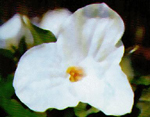

So you want to know a little bit about the Province of Ontario? Well you've come to the right place. I'll try to educate you on some things about this great province of mine, that way you can go out and impress all your friends, showing them you're just a walking encyclopedia of knowledge.
Ok, first off, the origin of the name...well the name 'Ontario' is generally thought to be derived from the Iroquois word 'Skanadario', meaning 'beautiful water'. If you look on the map, you'll see that Ontario is made up of thousands of lakes (approx. 250,000 or about one-sixth of the province), some not big enough to be drawn on the scales of maps printed, but you can see that we're a water province.
It is Canada's second largest province, and it covers 1.1 million km² (413,000 mi²). This is an area larger than France and Spain combined. Over 13 million people live in the province, which is bounded by Quebec on the east, Manitoba on the west, the Hudson Bay and James Bay on the north, and the St. Lawrence River and the Great Lakes on the south.
Care
to hear about the land structure? Ok, so this sounds more like a geography
class than anything, but incase you didn't know, I loved geography in elementary
and high school, so this still interests me, and it will interest you....or
else....the land is vast and varied, it changes suddenly from the flat
bogs and small trees of the Hudson Bay Lowlands to the dense forest, lakes,
and rocky hills of the Canadian Shield. Further south, in the area surrounding
the Great Lakes and the St. Lawrence Lowlands, most of the land has been
cleared for farming and urban development. It sounds worse than it
really is.
Some
other interesting facts about the land:
 Bird -
on June 23, 1994, the Avian Emblem Act was proclaimed and the
Bird -
on June 23, 1994, the Avian Emblem Act was proclaimed and the
Common
Loon was declared as the official bird of Ontario. The Loon is an
excellent swimmer and can be found swimming or nesting on or around many
of the lakes and rivers in the province, not to mention it's hauntingly
beautiful cry...it's a defining characteristic of Ontario
 Coat
of Arms - the shield
of the Province of Ontario was granted Royal Warrant by Queen Victoria
in 1868, and the crest and supporters by King Edward VII in 1909.
The shield consists of three golden maple leaves on a green background
with the banner of St. George, and a red cross on white background.
Above the shield is the crest, a black bear standing on a wreath of gold
and green while a moose and a deer support the left and the right.
The Latin motto "Ut incepit fidelis sic permanet" means "Loyal she
began, loyal she remains."
Coat
of Arms - the shield
of the Province of Ontario was granted Royal Warrant by Queen Victoria
in 1868, and the crest and supporters by King Edward VII in 1909.
The shield consists of three golden maple leaves on a green background
with the banner of St. George, and a red cross on white background.
Above the shield is the crest, a black bear standing on a wreath of gold
and green while a moose and a deer support the left and the right.
The Latin motto "Ut incepit fidelis sic permanet" means "Loyal she
began, loyal she remains."
Flag
- Given Royal Assent
on April 14, 1965 and proclaimed into force on May 21, 1965.
The
Red Ensign is the flag of Ontario. It includes the Union Jack in
the  upper
left hand corner and the Arms of the province on the right
upper
left hand corner and the Arms of the province on the right
Gem
- Ontario's official
mineral emblem is the semi-precious purple gemstone, amethyst, adopted
by the Legislature in 1975
 Flower
- the white trillium
was recommended as the floral emblem of the province by the Ontario Horticultural
Society and approved by the Legislature in 1937. It can be found
in deciduous forests and woodlands in late April and May. Being designated
the official flower of the province, it's illegal to pick one of them within
the boundaries of Ontario
Flower
- the white trillium
was recommended as the floral emblem of the province by the Ontario Horticultural
Society and approved by the Legislature in 1937. It can be found
in deciduous forests and woodlands in late April and May. Being designated
the official flower of the province, it's illegal to pick one of them within
the boundaries of Ontario
 Tree
- the Eastern White Pine
(Pinus Strobus) was adopted as the official tree of Ontario, and was given
Royal Assent on May 1, 1984. The White Pine was an important source
of income and trade during the pioneering days, and continues to be a valuable
resource for Ontario
Tree
- the Eastern White Pine
(Pinus Strobus) was adopted as the official tree of Ontario, and was given
Royal Assent on May 1, 1984. The White Pine was an important source
of income and trade during the pioneering days, and continues to be a valuable
resource for Ontario